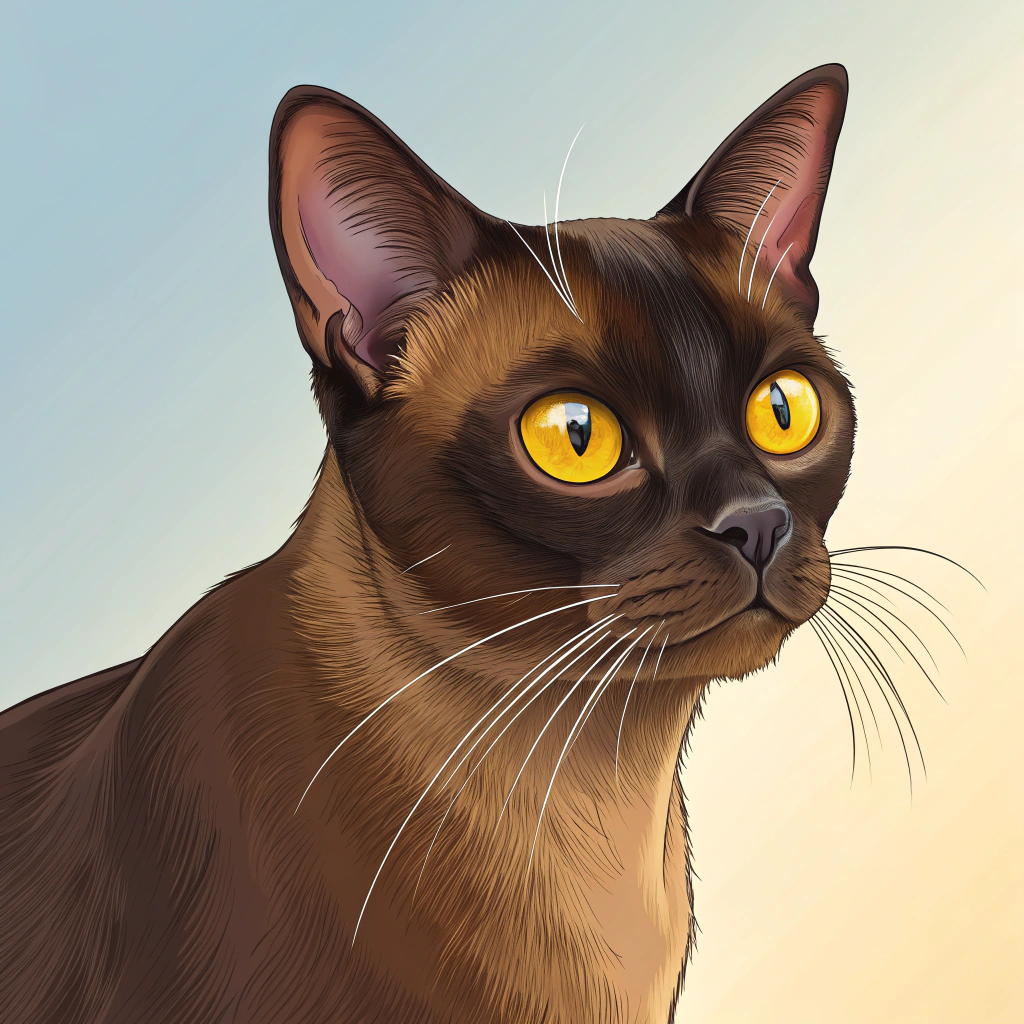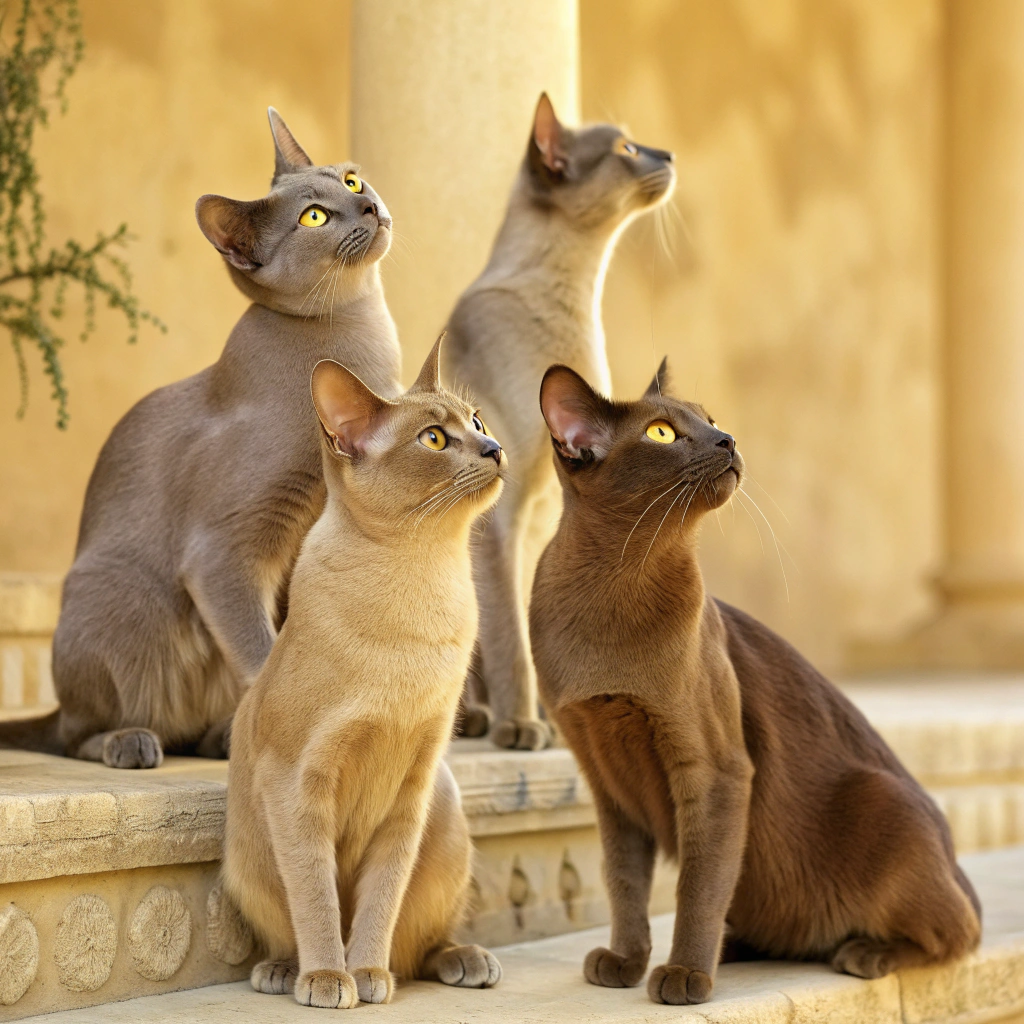Discover the beauty of Burmese cat colors and markings, from rich sable to rare platinum. Learn about coat genetics, care tips, and what makes each shade unique.
The Origins of Burmese Cat Coat Colors
The captivating palette of Burmese cat colors is not accidental; it is the result of complex genetics and decades of selective breeding. At the core of their distinct appearance lies the “Burmese gene,” a variation that softens coat pigmentation and gives the breed its signature satiny sheen. Unlike many cats that display patterns or tabby striping, Burmese cats exhibit more uniform tones that glow with an almost polished effect. Their coats are instantly recognizable for their richness, warmth, and velvety texture, a combination that makes them stand out in the feline world.
How Genetics Shape the Burmese Cat Palette
Genetics determine every strand of the Burmese cat’s fur color. The Burmese gene dilutes what would otherwise be a fully pigmented coat, creating a softened yet rich coloration that feels both luxurious and natural. This gene works by lightening the fur without eliminating the underlying pigment, producing hues that are more refined than stark. It’s a remarkable example of how a single genetic factor can shape an entire breed’s identity and visual appeal.
The Role of Selective Breeding in Defining Colors
The Burmese cat as we know it today would not exist without intentional breeding choices. Early breeders placed emphasis on sable, the deep brown shade now considered the hallmark of the breed. Over time, additional variations such as champagne, blue, and platinum were introduced and stabilized. Selective breeding ensured not only the consistency of these shades but also the preservation of the Burmese cat’s unique coat texture and luminous quality.
Classic Burmese Cat Colors Explained
The Burmese cat comes in four recognized coat colors, each one distinct yet unified by a shared glossy finish. These colors sable, champagne, blue, and platinum—form the foundation of the breed standard and highlight the refined beauty of the Burmese lineage.
The Rich Sable: The Signature Burmese Look
Sable remains the quintessential Burmese color. This deep, warm brown evokes the richness of polished wood, shimmering like mahogany under sunlight. It is the shade most closely tied to the breed’s heritage and continues to be the most sought-after color among Burmese enthusiasts. The sable coat is sleek, uniform, and immediately eye-catching, making it the defining look of the Burmese cat.
Champagne Elegance: Soft and Creamy Hues
The champagne Burmese offers a softer interpretation of the breed’s palette. With its warm beige tones and creamy highlights, this color radiates sophistication. The champagne coat glows under natural light and gives the cat a regal yet approachable appearance. It is less intense than sable but equally captivating, appealing to those who prefer a more subtle and refined hue.
Blue Burmese: A Cool and Striking Shade
Blue Burmese cats are known for their cool, misty-grey coats with silvery undertones. This ethereal shade contrasts beautifully with the golden eyes of the breed, creating a striking and memorable appearance. The blue coat has an almost velvety shimmer that reflects light in ways that make it look both soft and radiant at once. It is an elegant color that brings a sense of calm and serenity.
Platinum Burmese: The Lightest and Most Delicate Tone
Platinum is the rarest and most delicate of all Burmese colors. This pale, silvery-grey hue carries subtle lilac undertones, giving the cat a soft, ethereal beauty. Platinum Burmese cats appear luminous, almost as though touched by moonlight. Their rarity makes them especially treasured among breeders and collectors, and their refined appearance ensures they stand out wherever they are seen.
Recognizing Burmese Cat Markings
Burmese cats are not known for bold patterns or distinct markings. Instead, their coats are defined by a smooth, even finish that accentuates their glossy texture. Unlike Siamese or tabby cats, the Burmese does not typically display contrasting stripes or points. However, subtle nuances do exist, giving each cat a unique touch.
Why Burmese Cats Are Known for Solid Colors
The Burmese breed standard emphasizes uniformity of color. Their coats may show slight shading differences, but overall the appearance is smooth and solid. This creates a seamless look that enhances the breed’s polished aesthetic and reinforces the impression of satin-like fur.
Subtle Shading Differences That Add Depth
Although solid in principle, Burmese coats are not flat in appearance. Many cats display natural gradations, with slightly darker tones along the back, ears, and face, blending into lighter shades on the underbelly. These subtle shifts add depth and dimension, giving the coat a three-dimensional glow.
Eye Color Pairings That Accentuate Coat Beauty
Golden or amber eyes are the hallmark of the Burmese. Their warm gaze pairs perfectly with the richness of sable or the cool tones of platinum and blue. The combination of luminous eyes and a glossy coat creates a visual harmony that is unmatched by many other breeds.
How Burmese Colors Change Over Time
The colors of Burmese cats are not static; they evolve as the cat matures. Kittens are often born with coats lighter than their eventual adult shade, and gradual darkening occurs over the first few years. Seasonal and environmental factors also play a role in how these colors are perceived.
Kitten to Adult: Coat Development and Transitions
Burmese kittens often start with lighter, almost sandy coats, especially those destined to become sable or champagne. Over time, their coats deepen and settle into the rich tones for which the breed is known. This transition fascinates many owners, who enjoy watching their kittens transform as they grow.
Seasonal Shifts and Lighting Effects on Appearance
Light and temperature can subtly alter the perception of a Burmese coat. In bright sunlight, warm undertones shine through, while cooler indoor light highlights silvery or bluish tints. Seasonal changes can also influence the intensity of the coat, with winter often bringing out deeper hues.
Burmese Cat Color Genetics Simplified
Understanding Burmese coat colors means appreciating the genetics behind them. The Burmese gene modifies pigmentation to create the breed’s unique palette, and breeders carefully manage genetic pairings to predict outcomes.
Dominant and Recessive Genes at Work
The Burmese gene is a form of partial albinism that alters the way pigment is expressed. Depending on which dominant and recessive genes are passed on, a kitten may become sable, champagne, blue, or platinum.

How Breeders Predict Coat Outcomes
Experienced breeders use genetic knowledge to anticipate kitten colors. By studying the coat colors of both parents and understanding how alleles interact, breeders can forecast the likely range of outcomes while preserving genetic diversity.
Comparing Burmese Colors to Other Breeds
Burmese cats share ancestry with breeds like the Siamese and Tonkinese, but their coats are strikingly different. Where the Siamese shows pointed markings and the Tonkinese blends shading, the Burmese maintains a smooth and even coat that is unique in its elegance.
The Rarity and Popularity of Certain Colors
Not all Burmese colors are equally common. Sable remains the most widespread, while platinum is considered the rarest. Enthusiasts often prize rarer shades, but all Burmese cats, regardless of color, share the same affectionate temperament and captivating charm.
Caring for a Burmese Coat
The Burmese coat is famously low maintenance. Weekly brushing is usually sufficient to keep it sleek and glossy. Diet also plays an essential role, as nutrients like omega fatty acids ensure the coat retains its softness and shine. Owners who prioritize grooming and nutrition are rewarded with a cat that looks as radiant as it feels.
Choosing the Right Burmese Cat Color for You
When selecting a Burmese cat, color preference often comes down to personal taste. Sable appeals to those who want the traditional look, while platinum may attract those seeking rarity. Regardless of shade, Burmese cats are consistently affectionate, loyal, and people-oriented, making them a delightful companion in any home.

Myths and Misconceptions About Burmese Colors
One persistent myth is that coat color affects temperament. In reality, all Burmese cats are playful, affectionate, and deeply bonded to their humans, regardless of color. Another misconception is that Burmese cats should display pointed markings like their Siamese relatives. Breed standards are clear: Burmese coats are solid, glossy, and even, with golden eyes that complete their signature look.
The Timeless Beauty of Burmese Cat Colors
The Burmese cat’s colors are more than simple shades; they are reflections of genetics, history, and refined breeding practices. Whether sable, champagne, blue, or platinum, each coat is a masterpiece of elegance and simplicity. With their glossy fur, golden eyes, and affectionate personalities, Burmese cats remain one of the most enchanting breeds in the feline world.
